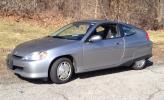|
My understanding is - - -
You input the basic info into the ScanGauge and let it run. It will tell you what it thinks your mpg is for a tank.
Then you calculate your ACTUAL mpg from tank fillup quantities and actual miles driven. Here's where your tire size will make a difference, you have to know how many actual miles regardless of changes to tire size or rear end ratios etc. Doesn't matter how you find the actual distance but I think most of the time getting it from the odometer plus calcs on tire size and any rear end ratio changes is best/easiest. Unless you have a GPS.
Then compare actual mpg to what the ScanGauge says for that same tank/fillup and you can get a correction factor. One that will add or subtract some percent to/from the Scangauge result to make it match your real world result. You enter the correction into the ScanGauge and after that it's pretty accurate.
If you want to do engine-off coasting, tell the S-gauge your car is a hybrid. That allows it to continue measuring distance when engine is not running, as long as the key is in the "On" position (usually would make the battery and oil idiot lights light up).
__________________
Coast long and prosper.
Driving '00 Honda Insight, acquired Feb 2016.


|